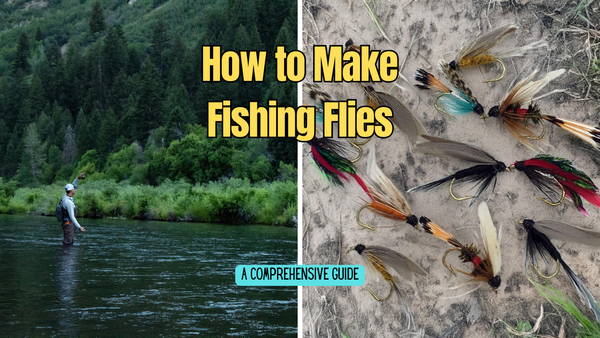Finding the perfect camp axe involves more than just blade quality; handle length plays a pivotal role. It affects everything from swing speed to safety and comfort.
Key Takeaways:
- The ideal handle length for a camp axe depends largely on its intended use, such as splitting kindling, felling trees, or detailed campsite tasks.
- Handle materials and the weight of the axe head play crucial roles in determining the best handle length for balance and efficiency.
- Experienced users often prefer a handle that offers enough power without feeling cumbersome, typically ranging between 14 to 26 inches.

Understanding the Basics of Camp Axes
When embarking on a camping trip, one of the essential tools you can carry is a camping axe. This versatile tool serves various purposes, from making kindling to clearing a campsite. But, not all axes are created equal, and the handle length plays a pivotal role in how effectively you can use the axe.
The camp axe, often lighter than its full-sized counterparts, combines portability with functionality. The length of the axe handle affects everything from the swing speed to the force of impact. A well-balanced axe, which aligns the head weight with the handle length, ensures that each chop is both efficient and safe.
The Role of Axe Head Weight
The weight of the axe head is integral in determining the optimal handle length. Heavier heads, typically found on splitting axes or larger felling axes, require longer handles to generate the necessary force for splitting firewood or felling large trees. Conversely, tasks like making kindling or chopping smaller wood pieces are more manageable with a lighter head and a shorter handle.
For instance, a heavy splitting maul might have a handle as long as 36 inches to leverage the power needed to split seasoned hardwood. On the other hand, a small hatchet for kindling might only need a handle length of around 14 inches to offer more control and precision.
Choosing the Right Handle Material
The material of the axe handle affects not only the durability but also the swing dynamics of the axe. Traditional hickory handles are favored for their strength and shock absorption qualities. Composite handles, while less traditional, offer durability and resistance against surface rust and environmental wear.
When selecting a camp axe, consider how the handle material might influence the overall balance and feel of the axe. A hickory handle might add a bit of weight but compensates with a natural flex that seasoned woodsmen often appreciate.
Handle Shape and Ergonomics
The shape of the handle also influences the axe's effectiveness. Ergonomically designed handles that contour slightly to fit the hand can reduce fatigue and increase chopping efficiency. This is particularly important for camp axes used in repetitive tasks such as splitting kindling or chopping small to medium-sized wood.
A well-designed handle should allow the user to maintain a firm grip while swinging and impact. Whether chopping block or felling a small forest, the handle should feel like an extension of your arm, providing both comfort and control.
Length for One-Handed vs. Two-Handed Use
The intended use of the camp axe dictates whether it should be optimized for one-handed or two-handed use. Smaller hatchets and boys' axes are typically designed for one-handed operation, ideal for lighter, more precise tasks like making kindling or small carving jobs.
In contrast, larger camp axes, designed for tasks like splitting firewood or felling trees, generally require two-handed grips. These axes have longer handles, which provide the necessary leverage to perform heavier tasks competently.
The Influence of Head Weight on Axe Performance
When pondering, "What is the best handle length for a camp axe?" it's crucial to consider the axe head weight. Axes with heavier heads, like splitting mauls, often require longer handles to provide enough power and leverage for effectively splitting firewood. This combination helps in delivering a more forceful strike without extra exertion from the user. On the flip side, a lighter head, such as those found on small forest axes or boys' axes, pairs well with a shorter handle, enhancing control for detail tasks like making kindling or carving.
Conversely, the head weight plays a pivotal role in determining the axe's overall balance and efficiency. Heavier axes, equipped with substantial heads, are typically used for felling trees or splitting large blocks of wood. These tasks demand axes that can generate significant impact, which is facilitated by a well-balanced tool where the head weight complements the handle length. For lighter camping tasks or when portability is key, opting for a lighter head and a shorter handle can make the axe less cumbersome and more manageable during long hikes or extended camping trips.
Choosing Between Full-Sized Axes and Smaller Hatchets
Deciding between full-sized axes and smaller hatchets hinges on the intended use and the environment in which the axe will be employed. Full-sized axes, with longer handles and heavier heads, are designed for felling trees and splitting large chunks of seasoned hardwood. They offer the necessary heft and leverage, making them indispensable for heavy-duty woodwork. However, their size can be a drawback when space is limited or when minimal wood processing is required.
Smaller hatchets, on the other hand, shine in their versatility and ease of transport. With a shorter handle and a lighter head, hatchets are ideal for smaller wood tasks, such as splitting kindling or chopping smaller branches. They are also a great companion for camping trips where every ounce matters. Hatchets can be easily attached to a backpack or tucked into a belt loop, ensuring they are always at hand when needed. Whether it's preparing firewood or clearing a campsite, a good hatchet can handle many tasks competently, proving itself as a valuable tool for any outdoorsman.
Impact of Handle Length on Portability
For many campers, the ability to easily carry and store their axe is crucial. Axes with shorter handles are more portable and can often be attached to a belt loop or tucked into a backpack. This makes them ideal for camping trips where space is at a premium.
However, a shorter handle might limit the axe's versatility, making it less effective for larger tasks. It's a trade-off between convenience and functionality that each camper must consider based on their specific needs.
Expert Recommendations on Handle Length
Most experienced axe users suggest that a handle length of around 20 to 26 inches is best for a general-purpose camp axe. This range offers a good balance between control and power, suitable for a variety of tasks from splitting kindling to chopping down small trees.
For those who prioritize lightweight and ease of carrying, a shorter handle around 14 to 18 inches might be sufficient, especially if the primary use is for smaller campsite tasks.

Summary
Choosing the right handle length for a camp axe involves considering the axe's intended use, the weight of the head, the material and shape of the handle, and the balance between portability and functionality. A handle length that provides enough power without feeling cumbersome, typically between 14 to 26 inches, is ideal for most camping scenarios. Remember, the best axe is one that feels like a natural extension of your own capabilities in the wilderness.

FAQs
What is the best handle length for a camp axe used primarily for making kindling?
For making kindling, a shorter handle length, typically around 14 to 18 inches, is ideal as it offers more control and precision for smaller, one-handed tasks.
How does the weight of the axe head influence the choice of handle length?
Heavier axe heads require longer handles to generate sufficient force for tasks like splitting firewood or felling trees, while lighter heads can be paired with shorter handles for detailed tasks.
Can the material of the axe handle affect its performance?
Yes, the material of the handle, such as traditional hickory or modern composite materials, impacts the axe's durability, weight, and shock absorption, influencing overall performance and user comfort.
Is a felling axe too big to use for camping?
A felling axe can be quite large and heavy, making it less practical for camping purposes where portability and efficiency are key.
Is a spltting axe a good axe to use for camping?
A splitting axe can be a useful tool for camping, particularly if you anticipate needing split firewood from larger logs. Splitting axes are designed with a wedge-shaped head, which helps to efficiency in splitting wood along the grain. However, it's important to consider the size and weight of the splitting axe, as some models can be quite heavy and bulky, making them less ideal for backpacking or minimalist camping trips.
Related articles:











